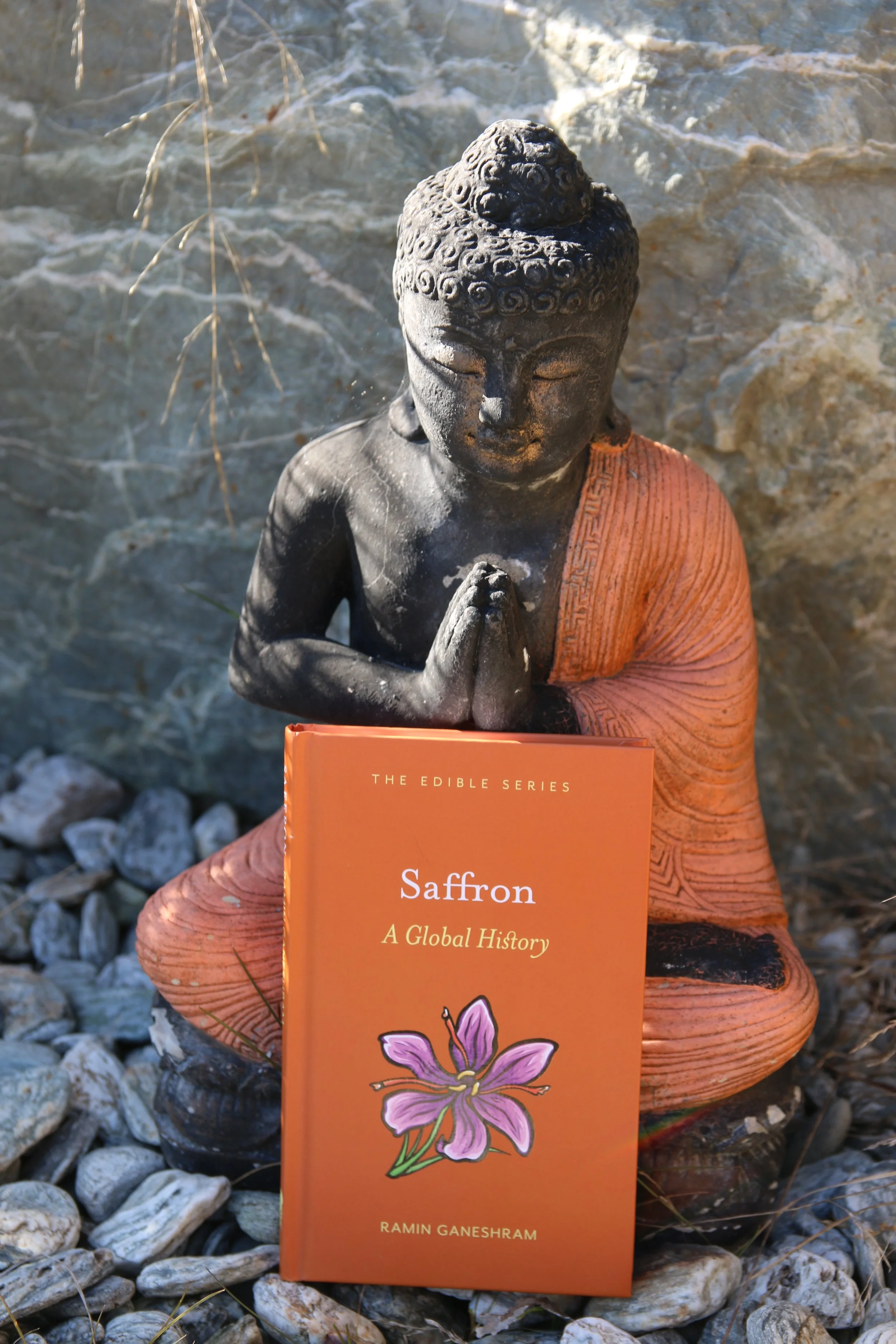Book review: Saffron A Global History
By Ramin Ganeshram
“For many who aren't trained chefs, how to use saffron remains a mystery, add that to the cost and people shy away from it. I hope this book will demystify it.” – Ramin Ganeshram
Saffron: A Global History (2020) written by award-winning journalist, chef and historian Ramin Ganeshram, explores the history of the world’s most expensive and prized spice, its threads literally worth their weight in gold.
Saffron A Global History traces saffron’s progressive journey around the world and its impact on various cultures, and religions. It reveals its allure as a spice sought after globally by merchants, chefs, artists, scientists, clerics, traders, warriors, and black-market smugglers. Saffron’s long history as a spice can be traced back to 50,000-year-old cave art in Mesopotamia. It was first cultivated by the ancient Greeks (and Saffron is visible in historic frescoes on Santorini) for medicinal and perfume purposes and increasingly became a trading spice as awareness of its value spread. It was used by the Egyptians for the wrappings of Egyptian mummies.
The Romans used Saffron as a demonstration of wealth and even used it to cleanse the streets of Rome of unwelcome smells. For Iranians, saffron became a major crop and was key for trade along the silk road through to Asia. Saffron became the dye used for the robes of Buddhist monks. Today the orange colour on the Indian flag is derived from the importance of saffron to India’s religions, Buddhists and Hindus in particular.
Saffron was first brought to western Europe by the Romans and subsequently by the Moors (particularly to Spain) and by Crusaders returning from the Middle East. By the Middle Ages Saffron was well known and was even thought to be a cure for bubonic plague despite many saffron farmers dying of the disease. As saffron’s influence and importance (and of course its value) spread globally saffron has become embedded in a number of global cultures and its importance for culinary dishes more sophisticated.
Saffron, is the threadlike golden stigma inside each saffron flower and it requires between 70,000 to 200,000 flowers to produce a kilo of finished saffron (taking approximately 400 hours to produce). The bulk of the worlds saffron crop is picked by hand by women and children in Iran, where around 90% of the worlds saffron originates, as well as regions in Afghanistan and Kashmir. An increasingly it is grown globally from Spain to New Zealand.
Ramin Ganeshram is an award winning journalist, chef, and public historian and the author of a number of cookbooks. She is a native New Yorker educated at Columbia University Graduate School of Journalism. She is has worked as a feature writer/stringer for the New York Times and for Newsday as a food columnist. Ramin grew up with an Iranian mother and as a result has grown up with saffron, given its importance to traditional Persian cooking making saffron a personal and comforting story and food for Ramin Ganeshram.
Saffron A Global History is a small hardback of 140 pages and is a very accessible and easy read. Well laid out with logical chapters centred around a defined periods of history and specific topics from “The Ancient World and Silk Road” to “Arts and Medicine”. It also offers specific advice on how and where to buy saffron (including how to avoid buying fake saffron) and how to grow it. The book incorporates many colour photos and illustrations which bring the herb, its long history and the many tasty looking saffron recipes to life. It also incorporates a number of additional references to keep exploring further.
Saffron A Global History is packed with interesting stories and facts. And if you have an interest in understanding the mystique of saffron, its real influence on world history or if you just like cooking with it, this book will be of interest to read and keep as a reference.
Black Teal Bay Books rating: 7/10

